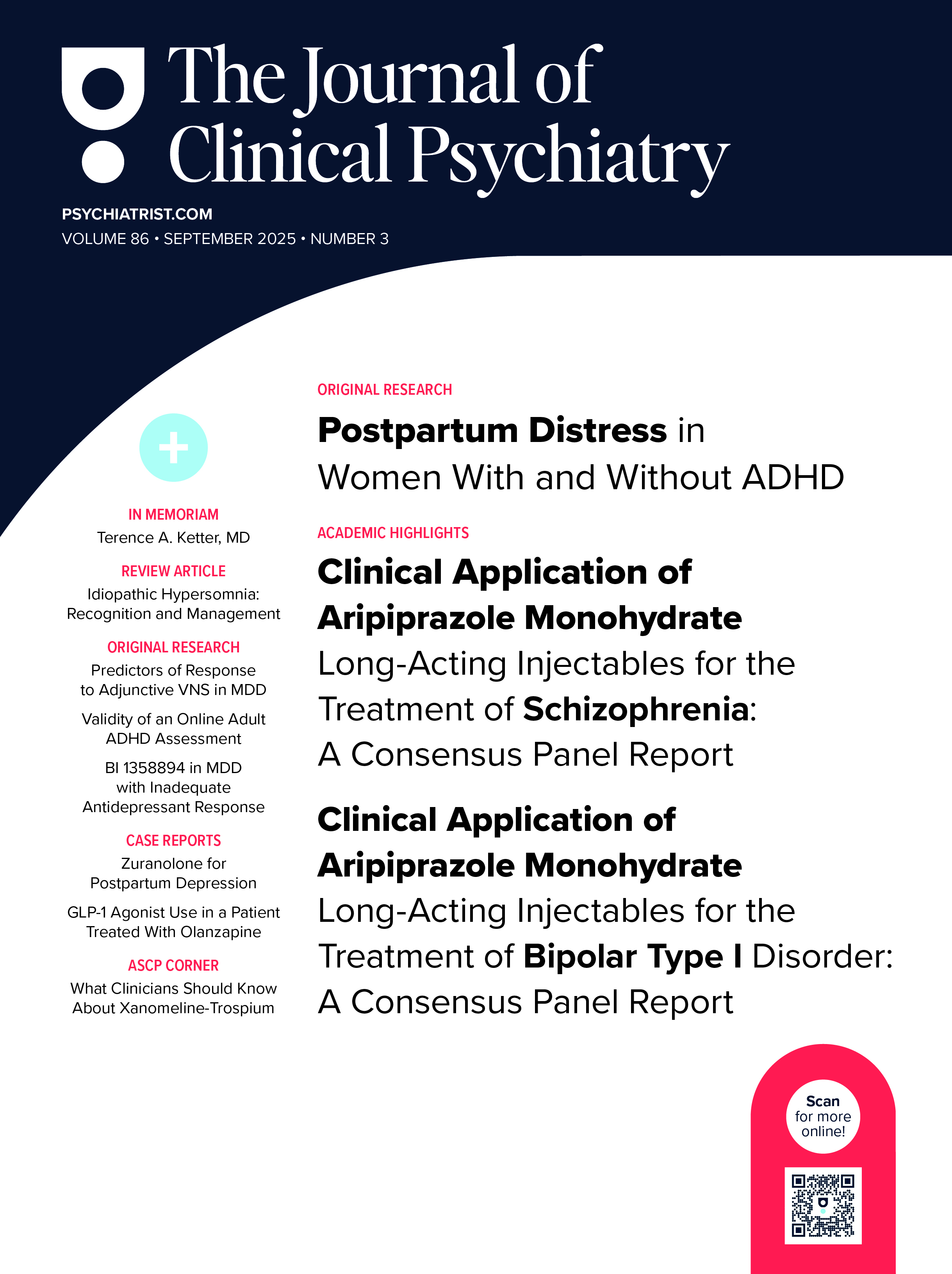Objective: The aims of this study were to investigate the incidence rate and symptomatology of postpartum-onset obsessive-compulsive disorder (PPOCD), to investigate the factors associated with PPOCD, and to compare clinical characteristics of obsessive-compulsive disorder (OCD) with and without postpartum onset.
Method: The study data were collected from 302 women who delivered at a child and maternity hospital in Turkey from August 2005 to November 2005 and a control group of 33 women who were admitted to the psychiatric outpatient clinic of a university hospital during the same time period and who met DSM-IV criteria for OCD. The 2 clinical interviews with women who delivered were performed face-to-face on the first day after childbirth and at 6 weeks postnatally. OCD and comorbid Axis II disorders werediagnosed by means of the Structured Clinical Interview for DSM-IV and the Structured Clinical Interview for DSM-III-R Personality Disorders, respectively. Obsessive-compulsive symptomatology was assessed with the Yale-Brown Obsessive Compulsive Scale.
Results: The incidence of PPOCD was 4% at 6 weeks postnatally. The most common obsessions in women with PPOCD were contamination (75%), aggressive (33.3%), and symmetry/exactness (33.3%), and the most common compulsions were cleaning/washing (66.7%) and checking (58.3%). The patients with PPOCD had significantly more frequent aggressive obsessions (p = .039) and less severe obsessive-compulsive symptoms (p = .013) than the OCD patients without postpartum onset. The predictors of PPOCD were avoidant (p = .000) and obsessive-compulsive (p = .004) personality disorders.
Conclusions: This study suggests that the puerperium is a risk period in terms of new-onset OCD and that avoidant and obsessive-compulsive personality disorders predict PPOCD.
Please sign in or purchase this PDF for $40.00.


